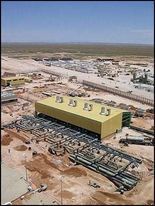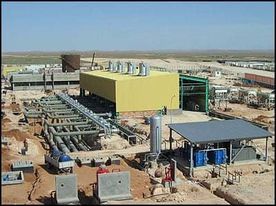#Quantity Surveyor and Site Engineer
Text
How To Start Your Career As A Surveyor
It will be universal undeniable fact that no one can reject that surveying is definitely the backbone associated with all the structure projects. Surveyor will be no doubt some sort of great profession. If you really have love to get surveyor, an individual first need to find out what actually inspector is. Surveyor is a person who surveys online (measures) land; miles, positions and marks land boundaries regarding title deeds and even constructions or road directions seabed for navigation. Surveyors are regarding different types based on their do the job.
Types of Surveyors
Usually, surveyors happen to be classified into 3 types:
Civil Technicians: Measuring distance and positions is typically the task of a detrimental engineer.
Hydro visual Surveyors: Their process is to guide seabed for routing.
Quantity Surveyors or Land Surveyors: Marking land boundaries intended for legal deeds or perhaps title and buildings sites is the responsibility of variety or land surveyors.
How to grow an Inspector
Following are presented some key points which usually will help you to become a new successful surveyor. To be able to become a surveyor, you need to have a really strong base involving mathematics and composing. https://www.castlesurveys.co.uk/ need to have a very good knowledge about trigonometry, algebra and angles which are essential for any surveyor.
The particular best thing anybody can do is in order to get a degree within one of the particular following fields, like as civil executive, quantity or terrain surveying and hydro graphic surveying dependant on your interest. You can join any university or college, which offers these types of courses, and regarding selecting a wish field, you can certainly take help from any of your college or university career therapist. You previous academics record is furthermore helpful in deciding on the best field for an individual.
Besides having the relevant degree, you also need to improve your skills in software, mechanised drawing and geometrical applications. The higher the skills, more risks to get a new suitable internship.
Ahead of getting into the career market, you have to move the surveyor documentation exam, since it is prerequisite to get a great operating license. You should do some extensive examine to pass the particular exam. It is better in order to take help from those who have already attended this exam, they will recommend you some suitable books for your preparation of the assessment.
Your internship period will be of great importance. This is the simply chance where a person gain some directly practical experience, which is not possible from typically the study books. Functional knowledge is more vital than bookish knowledge. You will are available to know about the complexities in addition to hardships, which are available in your method during working in the fields. In the event that you work found in your internship, your business may hire an individual.

The only key to success in today's competitive job marketplace is usually to keep advancing. You need to remain dedicated to your job and even you will discover yourself climbing the particular ladder of accomplishment below your feet. Trust these points will help you in order to some extent in purchase to make your own mind before signing up for any surveyor program. Keep these items in mind when deciding to come to be a surveyor and even the success will probably be yours.
2 notes
·
View notes
Text
Good afternoon TUMBLR - April 21th - 2024
''Mr. Plant has owed me a shoe since July 5, 1971."
Algeria Tiaret – 2003 – 2004
Part 1
In Italy was the hottest summer in centuries, and there were electricity cuts several times a day. Sometimes we just couldn't stand it anymore, and then we looked for refreshment in the Alps or at the Como lake. During one of these excursions we were at Piano del Tivano, when I received a call from the SAIPEM personnel office. An old acquaintance from my Nigerian days tells me:
Are you free?
Yes why'?
Bulato from Algeria mentioned your name for his project.
Umm…. are you sure? I'm asking this because I never got along with Bulato, so it seems strange to me that he mentioned my name.
I'm sure - come on, I'll wait for you here at the office tomorrow.
So it was that 15 days later I left for Algeria after the usual medical visits and eligibility. Milan-Rome-Algiers and then Hassi Messaoud, where I landed in the new airport that had just been inaugurated. The next day I was introduced to the presence of ''Come Xea Bulato''. I did not hide my surprise when I learned that he had specifically mentioned my name for this new assignment.
How is it?…. He tells me – have you got your head straight?
Gilbert….I've always had my head in order…. maybe you get confused with someone else.
Come on come on…. that ''so'' there is this new SP6 station that we haven't started yet so see if you go there tomorrow and start ahhh….
Okay , see you there Gilbert.
OZ2 PROJECT
As part of the increase in the production and export of Algerian crude oil, SAIPEM in joint venture with the French Spie-CAPAG had acquired the EPC (Engineering-Procurement-Construction) of 6 pumping stations plus a reception station of the new OZ3 oil pipeline . A Russian company had been awarded the construction of two 46-inch pipelines, which would bring crude oil from wells located in southern Algeria to the port of Arzew, near Oran. The pumping stations were planned on the route of more than 1,000 km long - spaced about 150 km apart. The stations were in practice very similar, a sort of copy-paste, with minimal differences due to the morphology of the site where they were built, or, as in the case of SP6, due to the provision of large power generators, given the distance of the station from the Algerian electricity grid.
However, the French of Spie-Capag had forced SAIPEM to accept their rotation schedule, so we Italians also had 54 days of straight work and 16 days of vacation. It is true that of these 16 days we ended up spending 12 at home, given that the security procedures required us to return to Hassi Messaoud to fly to Paris and reach Milan the following day (same procedure for the return as well). For us stationed relatively close to Oran – about 250km away – this was doubly stressful. From Oran international airport we could have reached Paris and Milan in a day, but safety procedures forced us to make a (dangerous) journey of over 1,000 km by car.


SP6 PUMPING STATION
JOURNEY FROM HASSI MESSAOUD TO TIARET SP6
Meanwhile, at the Hassi Messaoud base I had found some old colleagues, such as the faithful Gilbert Mercado, the Philipino Quantity Surveyor who had been with me on the Taweelah Water project in Abu Dhabi. However, I had noticed that when someone asked me ''which station you were assigned to'' to my answer ''to SP6'' everyone without distinction would sneer. The next morning, in view of the 600 km to travel in the Land Cruiser, I was ready very early. I would have learned that there was no point in getting up at dawn: in any case - according to safety procedure - you had to wait for the so-called ''armed escort'' that the Algerian army kindly provided to us (for a generous fee). The situation in Algeria had improved greatly since the 1992-95 civil war, but pockets of guerrilla warfare persisted which aimed above all at kidnapping foreigners to profit from possible ransoms and for the resonance this type of action had in the media. Finally, around 9.30 the escort arrived: two Land Cruisers with eight heavily armed soldiers. I would have traveled in an armored Toyota with two soldiers on board, one car preceded us by about 300-400 meters, and the second followed us closely. Continuous radio contact between us and also with the operational base of Hassi Messaoud, where a former French officer of the Foreign Legion was stationed. A further complication that would have slowed down the journey enormously was represented by the fact that the armed escort could not cross the border of the so-called ''wilaya'' ("district or province). At every province border, the armed escort that was supposed to take over the current one was perpetually late. Furthermore, the meeting between the two escorts inevitably produced hugs, greetings, tea and coffee sessions that could last for hours. With these premises, starting at 10.00 in the morning, in the evening we had traveled just 385 km, and we stopped to spend the night at the SP3 camp, near the city of Ghardaia.

GHARDAIA
The city is the main settlement of the Mzab valley, a place of refuge for members of the Islamic sect of Ibadi after the collapse of the kingdom of Tahert; It still retains much of its medieval architecture today, some of which has been declared a UNESCO World Heritage Site. The municipality of Ghardaïa has a population of approximately 93,000 inhabitants. It is a fortified city divided into three sectors surrounded by walls. In the center is the historic Mozabite area, with a mosque with a pyramidal minaret and a square with porticoes. Noteworthy are the white, pink and red houses, built with sand, clay and chalk, characterized by terraced roofs and porticoes. In her 1963 book, The Force of Things, the French existentialist philosopher Simone de Beauvoir described Ghardaïa as "a beautifully constructed cubist painting".
GHARDAIA – SP6 Tiaret
The following morning, after having eaten breakfast, we finally left for Tiaret, or rather for the SP6 station, which was located on a plateau at 1,200 meters above sea level and about 40 km south of Tiaret. We passed through the city of Laghouat, then a large military center. The landscape was exasperatingly monotonous: the usual desert of stones and low shrubs which always gives that ''dirty'' impression. The spare changes followed one another incessantly, and the march was perhaps even slower than the day before. The sun was setting when we turned right from the N14 state road towards the East onto the sandy track that led to the SP6 station. About twenty kilometers of very rough track (it would have created quite a few problems during the transport of the heaviest equipment) and we finally arrived at the station camp in the dark (Against safety procedures).

SP6
The next morning I took a look around the field and the construction site and I immediately realized why my colleagues were grinning at the mere mention of ''SP6'': we were in the most classic ''in the middle of nowhere''. All around are low mountains devoid of vegetation, a truly uninspiring landscape. Next to the new station, about 200 meters away, the old SP6 built in the 1980s showed all the signs of its age. The SAIPEM camp - right next to the offices and construction site, another serious mistake - was made up of the same old ''caravans'' which certainly had a better past. The cramped rooms, with a built-in bathroom, a single bed, a small wardrobe, table and chair, satellite TV: all the ''amenities'' that ''SAIPEM mother'' (but in this case I would say more ''stepmother'' '') reserved for us.
There was a very spartan canteen, where everyone ate together, expatriates and locals, which caused quite a few problems.
THE STAFF
At the time of my arrival the staff was still in flux. The Site Manager, according to the agreements between SAIPEM and Spie CAPAG, was a Frenchman named Antoine Barrault. Already a person of a certain age, he continually remarked that he had a past as a builder of nuclear power plants with AREVA - so for him this assignment in Algeria where a simple oil pumping station was to be built, would have been ''a joke''. He will be replaced within two months, and we will have fallen from the ''frying pan into the fire'': Monsieur Borrut will arrive, who will distinguish himself above all by having personally written 783 letters to the Client SONATRAC. During his stay, Mr. Borrut came to the site just once, during a visit by Mr. Bulato. We were passing by in front of gas separator and Mr. Bulato asked him the function of this equipment - Borrut in desperation because he didn't know it, and with broad silent cinema gestures turned to me, asking me to answer instead of him: a truly ridiculous and pitiful moment.
MICHELI GIORGIO
At the beginning of the station construction, Giorgio was a young new employee of SAIPEM. He was acting as handyman, but Bulato soon called Giorgio 'next to him' at Hassi Messaoud's base and made him his personal assistant. The young boy from Mandello was endowed with great potential, and in fact he was going to have a great career in SAIPEM, where he currently holds the position of Director of the Worldwide Onshore sector. Giorgio once had an argument with the Starstroy Company Russians (The pipeline's Contractors) . Micheli had made the mistake of going to face them alone, and only his rapid ''strategic retreat'' avoided worse trouble. He risked to be beaten by those rude people for silly reasons.
ADRIANO ANGELOTTI
I had met Adriano on the construction site in Soku, Nigeria. At SP6 his function was Mechanical Superintendent, basically he supervised all the mechanical activities of the station. He was a native of Massa Carrara, and his biggest flaw was to be one of those die-hard fans of the wrong football team, namely Milan' AC. He had filled his room with posters, banners, scarves, fake Champions Cups and all the paraphernalia of hardcore fans. Each Milan defeat he used to fell into depression for days and becaming intractable. For the rest he followed the stereotype of ''Homo SAIPEMS'' in every way, fully faithful to the Company's.
BREVI PIETRO
A kind young man, Poetro was looking like a guy from another era ''parachuted'' in our time. When Mr. Borrut was finally kicked out (besides being of no use, he had a monster salary of 17,000 euros/month) this young boy from Caravaggio (Yes the same village of the famous Italian painter) took his place as Chef de Base. A function that he carried out admirably, despite his lack of experience, thanks to his innate qualities. At the end of the project, having returned to the San Donato headquarters and realizing that SAIPEM only offered him assignement abroad, he resigned from the company and set up his own business related to oil & gas.
LOCAL SUB CONTRACTOR
Sometimes I feel like drawing the famous veil of compassion over these events, because the reader might think that I something against Algerians, Bengalis, Mexicans, Khazakhs and all the other ethnic groups that I have had the fortune of to come into contact during my working life. Well no, it's not like that, I swear. These people were really poor, of that type of poor that in the end you don't even have the courage to rage, because it would be, as they say in these cases, ''shooting on the Red Cross'' (or Red Crescent, if you prefer). The problem was (I think it still is) that in Algeria we have to make do with what we have - and what we have is generally of very poor quality. The only thing that saves the Algerians is the enormous goodwill of workers, technicians and construction workers in general. For the rest, the local companies lacked resources (and those that existed were constantly breaking down); the supplies of materials were constantly late. Even - at the dawn of 2003 we were only presented with a hand-written paper progress report, lacking the '' computers for accountants''. Having taken note of the situation, I, Angelotti and all SAIPEM people tried in every way to help the Sub Contractors. Without, for the avoidance of doubt, however, making our management aware of the enormous problems we faced every day. Mr. Borrut, made aware of the shortcomings of the Sub Contractors, always reacted in the same way:
Please prepare a draft letter, I will edit send it straight away to Client!''
In the end there will be hundreds of letters that Mr. Borrut himself wrote, while his secretary played on the computer.

PROJECT SECURITY .
The security procedures provided for the presence at each station of a former Foreign Legion officer, who at his sole discretion issued service orders in which he regulated arrivals, departures, permissions to go to Tiaret etc. Monsieur Darcy, a young Legion retiree (he was 49 years old), worked at SP6. A very determined guy, who, taking full advantage of the laws of the French state, had moved to live in Madagascar. That's because the French law provided that pensioners who established their residence in the so-called ''Overseas Territories'' had an immediate tax benefit on the amount of the pension. In essence they collected the gross pension, without paying taxes. Darcy had established his place of residence at Ile Reunion – where his pension was credited – but he lived in Madagascar, where the cost of living was even lower. Once Mr. Darcy was on a collision course with the Algerians, who, taking advantage of the Friday prayer day, were willing to go to Tiaret using SAIPEM jeeps. Mr Darcy, citing sources of information, refused them the cars, sparking the reaction of the Algerians, who accused him of racism and to prevent them from participating in Friday prayers.
EID EL ADHA.
The Aid el Adha arrived, and SAIPEM Management recommended to the Base Chief to organize a lunch for everyone, but for the Algerians in particular, with the traditional slaughtered mutton. Mr. Borrut, not knowing which way to turn, entrusted himself to the Romanian mechanic, who said he was an expert in this type of activity. Constantin Dimitrescu was a person of about 2.00 meters high, taciturn, with hands as big as shovels. Two caroufs (rams) were purchased from a shepherd who lived nearby. Constantin thought about slaughtering, and hung the rams outside his workshop waiting for Friday. In the meantime, the local catering company had prepared an area with tables, chairs and various decorations, where we would have to eat the grilled meat. On the day of the celebration the Algerians showed up in the canteen, we exchanged good wishes, with big hugs and pats on the back and the usual expressions ''Eid Mabrouk - Eid Mubarak''. But then, incomprehensibly, they disappeared and none of them showed up at the lunch. Towards the evening some of them appeared, and when asked ''why you weren't there for lunch, it had been organized especially for you'' they stated that they had preferred to go to Tiaret to take part in the great thanksgiving prayer in the large mosque. But the way in which they said it didn't convince us, so we made sure to take aside a couple of individuals from the Kabilia ethnic group, who were more open-minded. They told us the real reason for their failure to attend the lunch. Someone had seen Constantinescu marinate mutton in wine, and even cook some pieces by pouring cognac over them!!!
''So…. quest-que tu veux…. …we decide to desert the party. It's too forbidden for us to become contaminated by alcohol!!
But, we replied, many of you always drink wine at dinner in the canteen on Fridays!
Ouiiii…but you see….the majority of us don't drink wine and so all of us, out of solidarity, decided not to participate.
We had to eat mutton for ten days.
ALGERIAN TRUFFLE

The Company had rented a 19-seater plane from a private company of Czech Republic. We had prepared a dirt runway to facilitate the landing of the Let L 410 Turbolet turboprop with which Mr. Bulato and the Management intended to more frequently monitor the progress of work in the various stations. For the inaugural flight to SP6 the local catering company thought it would be a welcome thing by preparing a special buffet which also included dishes with Algerian truffles. Mr. Bulato particularly appreciated the food, and consumed it abundantly. The truffles had a strange smell to me, so I barely tasted them. Unfortunately, and then you will understand why, it was expected that I would take advantage of the return flight to Hassi Messaoud, since the day of my return to Italy for holidays had come. The flight would have saved me the usual boring two or three days of travel by road from SP6 to SP1. I boarded the aircraft with a bit of reluctance, there were about ten passengers in total, including the Colombian engineer Maria (yes, the same one I had met in Nigeria). But the ''best'' was yet to come. From above, Algeria looks a lot like a Martian landscape, with very strange colors from purple to black, from ocher to brown.

After an hour from take off Mr. Bulato started to feel ill. Strong pains in his lower abdomen that made him writhe, the origin of which was immediately attributed to the famous ''Algerian truffles''. Unfortunately, as I had recently learned, the plane was not equipped with a toilet! And there was absolutely no question of an emergency landing! Bulato couldn't take it anymore and in a fit of madness he apologized to everyone and……he spread a piece of plastic in the corridor and…unloaded himself there in front of all of us!! An unbearable stench had pervaded the plane, even though once the ''operation'' was finished Bulato had wrapped the nylon and placed the ''product'' inside a plastic bag. The pilot was asked if there was the possibility of evacuating the air - the ventilation was turned to maximum, but for a good hour most of us fought the urge to vomit. Among those who were most ill was obviously Maria.
Once we landed we rushed outside to breathe, and the highly hydrocarbon-polluted air of Hassi Messaoud had never seemed so 'healthy' to us.
ABB TURBO COMPRESSORS
SP6 was the last station under construction – the delivery sequence agreed with SONATRACH was SP1 – SP3 – SP5 - after which SP2 – SP4 – SP6. Our station suffered a further delay when at the port of Oran, during the unloading operations of the turbo compressors of German origin, one of the three fell into sea! In any case we prepared to receive two of the three planned turbo compressors. With a weight of 57 tons each, the exceptional load risked becoming silted up - or worse - during the 20-plus kilometers of the track that separated from the Route National N23 to reach the SP6. We identified the critical point in the bridge over the Ouadi Faidja, made of simple baked bricks. With the help of the dilapidated equipment of our civil Sub Contractor we reconditioned the entire track and with the permission of the local authorities we filled the sides of the bridge over the almost always dry ouadi with material. During the winter, sporadic events caused flash floods – if they had occurred before the turbo compressors arrived, they would have caused a further delay in completing the station. Luckily that year there was snow – yes snow in the Algerian desert!! - immediately after the turbo compressors were transported to the station.

INTERCONNECTION WITH OLD SP6 STATION.
Our scope of work included the connection between the new SP6 and the old SP6 station. In practice, the new pipeline had to be interconnected with the old one, because in case of problems the flow of crude oil could be sent to the lines already in operation. I then went to talk to the head of the old SP6, to ask where the pipes of the old oil pipeline that we had to intercept were buried. Omar was an elderly person, he had worked at the station for more than 30 years and he answered me in the most typical way in which Algerians respond when faced with responsibilities:
Where do you find the old ones? Ahh …moi….je ne sais pas……. (where are the old pipes? I don't know)
How come you don't know Omar?
- Moi… à l'époque… quand ils ont enterré 'les tuyaux…. je n'étais pas la'… j'étais en conge' maladie… donc je ne peux pas te say que je suis la'…. ou la…. (I… at the time… when they buried 'the pipes… I wasn't there'… I was sick… …so I can't tell you that pipes are here '…. or there…)
- Et alors qu'est-qu'on fait Si Omar? (so what do we do?)
Maybe ....maybeeeeee ....when my camarade will be here......but he is in vacation ' I think you..... you need to wait for him to return....''
So it may seem incredible to you, but none of the station workers knew the underground location of two 48-inch pipes where hundreds of thousands of oil barrels passed every day. No as-built drawings had been compiled, and waiting was the most practiced activity in Algeria. Eventually Omar's colleague, once he returned to work, was able to indicate to us approximately where the pipes were located.
FRIDAY WITH THE NOMADS.
It was Friday, a day of rest, and an Algerian from our SONATRACH client proposed that I go for a tour in the surrounding area. He had noticed the presence of a series of nomadic tents, and he wanted to visit them. About 30 minutes away by off-road vehicle, we found the camp: in all about ten of those brown and black tents that characterize Algerian nomads. A couple of men came out of the tents with rifles slung over their shoulders, but my companion spoke to them, saying that we came in peace. We were introduced into the tent of the Chief, a very elderly man with a hieratic presence. We were offered tea and simple but good-tasting sweets. Naturally, the women could not be seen, while a crowd of children played in the open space in front of the tents. The dialogues took place in the local dialect (darija) and were translated for me by my companion. The Chief did not appear to be unaware of Algeria's current situation, and he asked about Huari Boumedienne, the country's first president after independence from France.
Boumedienne died in 1978 Hassidi…….
Really? Well I'm so sorry, he was a man I respected very much….
We parted with warm handshakes and pats on the back, and the Chief told us to come back and visit him soon.

STARSTROY
The Russians didn't give a damn about all the security procedures and the possible presence of terrorists in the area. They lived in Sougueur, a town about 40 km from SP7. They arrived every morning driving the battered Lada NIVAs at full speed in scattered order as if they were racing the Paris-Dakar. They were allowed to do things that we didn't even dream of doing, such as casting the anchor block of the pipes in 5 days, while the specifications said that it had to be a continuous concrete pour without interruptions. We were forced by the Works Management to make an important change to the interconnection with the old SP6 because the Russians completely got the pipeline axis coordinates and its elevation completely wrong.
BILLIARDS
There wasn't much to do in my free time, so I got a bit passionate about playing billiards. As a result of playing, I had become good at it, and so I realized that I won the tournament that we had organized between all the members of the Staff, including the Algerians. In the final I beat Mr. Cherif our planner, who was undoubtedly the best of the locals in every sense.
CHERIF
Within a couple of years, despite loving his country, he managed to emigrate to Canada where he found work at a large oil & gas company. Having acquired a Canadian passport, he moved to Abu Dhabi in the Emirates, where I met him again in 2013. He had married an Algerian and had a little girl. He worked for ADNOC, the state oil company, and lived in a luxury apartment made available by his employer, right next to the Royal Meridian Hotel. Congratulations Cherif!
WINE AT THE TABLE
There was this ''concession'' from Company, namely wine at the table in the evening for dinner. All Italians drank it, and some locals too, especially those originally from Kabylia, a region in the North of Algeria, who consider themselves authentic Algerians and not Arabs. One Friday evening an Algerian from SONATRACH who had sometimes tasted the wine with us, suddenly got up from the table and shouted, saying ''it was time to put an end to this consumption of alcohol, which was a provocation, which was against the principles of Islam, and that we Westerners did it to corrupt the young generations of Algerians faithful to the dictates of religion''. Fortunately we had Monsieur Darcy on our side who didn't waste time, and told him clearly that if he didn't want to drink the wine, he couldn't impose his will on everyone else. The matter was about to degenerate, and the prompt response of the Algerian Head of Mission - a gentleman already advanced in years and endowed with a certain charisma among his fellow countrymen - put an end to the diatribe. The brute was ''kindly'' escorted out and told that if he wanted he could have dinner in his room from the next day.
This was an episode that greatly shocked the locals who worked with us. On the one hand they wanted to show that they were modern and open-minded, but then, fearful that radical elements could take over, they were always ready to lower the bar.
1 note
·
View note
Text
Tim Groom unwraps mill-inspired housing in Manchester

The first residents have moved into this £24 million build-to-rent scheme on the edge of Manchester’s Northern Quarter designed by local practice Tim Groom Architects.
The 144 apartment 12-storey project in Oldham Road has been developed by Mulbury City for funder and ‘long-term custodians’ of the building, Cheyne Capital.
The investment funds came from London-based Cheyne Capital’s Impact Real Estate Fund, set up to tackle the UK’s shortage of affordable housing. Around a third of the homes are earmarked for local key workers, such as nurses and teachers, at discounted rents.
The 11,690m² stepped scheme on the ‘long and thin’ plot houses a mix of one-, two- and three-bedroom apartments.
The practice describes the scheme as a modern ‘mill’ building.
Clad in brick, the exterior of the Poplin development – named after the fabric used to make coats on the site during the Second World War – was inspired by the warehouse arches in the surrounding New Cross area and neighbouring Ancoats Conservation Area.
Contractor GMI Construction Group took 24 months to complete the project.
Project data
Location 2 Addington St/Oldham Road, New Cross, Manchester
Local authority Manchester City Council
Type of project Residential
Client Mulbury City for Cheyne Capital
Architect Tim Groom Architects
Interior designer YOUTH
Landscape architect Layer
Planning consultant Deloitte
Structural engineer Ridge
M&E consultant Ameon
Quantity surveyor RLB
Principal designer Rawlings CDM
Lighting consultant Artin
Main contractor GMI Construction Group
Funding Cheyne Capital
Tender date November 2020
Start on site date June 2021
Completion date June 2023
Contract duration 24 months
Gross internal floor area 11,690m²
Form of contractt Design and Build
Annual CO2 emissions 1,836 kg/CO²/m²
Total cost £24 million

0 notes
Text
Tim Groom unwraps mill-inspired housing in Manchester

The first residents have moved into this £24 million build-to-rent scheme on the edge of Manchester’s Northern Quarter designed by local practice Tim Groom Architects.
The 144 apartment 12-storey project in Oldham Road has been developed by Mulbury City for funder and ‘long-term custodians’ of the building, Cheyne Capital.
The investment funds came from London-based Cheyne Capital’s Impact Real Estate Fund, set up to tackle the UK’s shortage of affordable housing. Around a third of the homes are earmarked for local key workers, such as nurses and teachers, at discounted rents.
The 11,690m² stepped scheme on the ‘long and thin’ plot houses a mix of one-, two- and three-bedroom apartments.
The practice describes the scheme as a modern ‘mill’ building.
Clad in brick, the exterior of the Poplin development – named after the fabric used to make coats on the site during the Second World War – was inspired by the warehouse arches in the surrounding New Cross area and neighbouring Ancoats Conservation Area.
Contractor GMI Construction Group took 24 months to complete the project.
Project data
Location 2 Addington St/Oldham Road, New Cross, Manchester
Local authority Manchester City Council
Type of project Residential
Client Mulbury City for Cheyne Capital
Architect Tim Groom Architects
Interior designer YOUTH
Landscape architect Layer
Planning consultant Deloitte
Structural engineer Ridge
M&E consultant Ameon
Quantity surveyor RLB
Principal designer Rawlings CDM
Lighting consultant Artin
Main contractor GMI Construction Group
Funding Cheyne Capital
Tender date November 2020
Start on site date June 2021
Completion date June 2023
Contract duration 24 months
Gross internal floor area 11,690m²
Form of contractt Design and Build
Annual CO2 emissions 1,836 kg/CO²/m²
Total cost £24 million

0 notes
Text
Tim Groom unwraps mill-inspired housing in Manchester

The first residents have moved into this £24 million build-to-rent scheme on the edge of Manchester’s Northern Quarter designed by local practice Tim Groom Architects.
The 144 apartment 12-storey project in Oldham Road has been developed by Mulbury City for funder and ‘long-term custodians’ of the building, Cheyne Capital.
The investment funds came from London-based Cheyne Capital’s Impact Real Estate Fund, set up to tackle the UK’s shortage of affordable housing. Around a third of the homes are earmarked for local key workers, such as nurses and teachers, at discounted rents.
The 11,690m² stepped scheme on the ‘long and thin’ plot houses a mix of one-, two- and three-bedroom apartments.
The practice describes the scheme as a modern ‘mill’ building.
Clad in brick, the exterior of the Poplin development – named after the fabric used to make coats on the site during the Second World War – was inspired by the warehouse arches in the surrounding New Cross area and neighbouring Ancoats Conservation Area.
Contractor GMI Construction Group took 24 months to complete the project.
Project data
Location 2 Addington St/Oldham Road, New Cross, Manchester
Local authority Manchester City Council
Type of project Residential
Client Mulbury City for Cheyne Capital
Architect Tim Groom Architects
Interior designer YOUTH
Landscape architect Layer
Planning consultant Deloitte
Structural engineer Ridge
M&E consultant Ameon
Quantity surveyor RLB
Principal designer Rawlings CDM
Lighting consultant Artin
Main contractor GMI Construction Group
Funding Cheyne Capital
Tender date November 2020
Start on site date June 2021
Completion date June 2023
Contract duration 24 months
Gross internal floor area 11,690m²
Form of contractt Design and Build
Annual CO2 emissions 1,836 kg/CO²/m²
Total cost £24 million

0 notes
Text
Tim Groom unwraps mill-inspired housing in Manchester

The first residents have moved into this £24 million build-to-rent scheme on the edge of Manchester’s Northern Quarter designed by local practice Tim Groom Architects.
The 144 apartment 12-storey project in Oldham Road has been developed by Mulbury City for funder and ‘long-term custodians’ of the building, Cheyne Capital.
The investment funds came from London-based Cheyne Capital’s Impact Real Estate Fund, set up to tackle the UK’s shortage of affordable housing. Around a third of the homes are earmarked for local key workers, such as nurses and teachers, at discounted rents.
The 11,690m² stepped scheme on the ‘long and thin’ plot houses a mix of one-, two- and three-bedroom apartments.
The practice describes the scheme as a modern ‘mill’ building.
Clad in brick, the exterior of the Poplin development – named after the fabric used to make coats on the site during the Second World War – was inspired by the warehouse arches in the surrounding New Cross area and neighbouring Ancoats Conservation Area.
Contractor GMI Construction Group took 24 months to complete the project.
Project data
Location 2 Addington St/Oldham Road, New Cross, Manchester
Local authority Manchester City Council
Type of project Residential
Client Mulbury City for Cheyne Capital
Architect Tim Groom Architects
Interior designer YOUTH
Landscape architect Layer
Planning consultant Deloitte
Structural engineer Ridge
M&E consultant Ameon
Quantity surveyor RLB
Principal designer Rawlings CDM
Lighting consultant Artin
Main contractor GMI Construction Group
Funding Cheyne Capital
Tender date November 2020
Start on site date June 2021
Completion date June 2023
Contract duration 24 months
Gross internal floor area 11,690m²
Form of contractt Design and Build
Annual CO2 emissions 1,836 kg/CO²/m²
Total cost £24 million

0 notes
Text
Tim Groom unwraps mill-inspired housing in Manchester

The first residents have moved into this £24 million build-to-rent scheme on the edge of Manchester’s Northern Quarter designed by local practice Tim Groom Architects.
The 144 apartment 12-storey project in Oldham Road has been developed by Mulbury City for funder and ‘long-term custodians’ of the building, Cheyne Capital.
The investment funds came from London-based Cheyne Capital’s Impact Real Estate Fund, set up to tackle the UK’s shortage of affordable housing. Around a third of the homes are earmarked for local key workers, such as nurses and teachers, at discounted rents.
The 11,690m² stepped scheme on the ‘long and thin’ plot houses a mix of one-, two- and three-bedroom apartments.
The practice describes the scheme as a modern ‘mill’ building.
Clad in brick, the exterior of the Poplin development – named after the fabric used to make coats on the site during the Second World War – was inspired by the warehouse arches in the surrounding New Cross area and neighbouring Ancoats Conservation Area.
Contractor GMI Construction Group took 24 months to complete the project.
Project data
Location 2 Addington St/Oldham Road, New Cross, Manchester
Local authority Manchester City Council
Type of project Residential
Client Mulbury City for Cheyne Capital
Architect Tim Groom Architects
Interior designer YOUTH
Landscape architect Layer
Planning consultant Deloitte
Structural engineer Ridge
M&E consultant Ameon
Quantity surveyor RLB
Principal designer Rawlings CDM
Lighting consultant Artin
Main contractor GMI Construction Group
Funding Cheyne Capital
Tender date November 2020
Start on site date June 2021
Completion date June 2023
Contract duration 24 months
Gross internal floor area 11,690m²
Form of contractt Design and Build
Annual CO2 emissions 1,836 kg/CO²/m²
Total cost £24 million

0 notes
Text
Tim Groom unwraps mill-inspired housing in Manchester

The first residents have moved into this £24 million build-to-rent scheme on the edge of Manchester’s Northern Quarter designed by local practice Tim Groom Architects.
The 144 apartment 12-storey project in Oldham Road has been developed by Mulbury City for funder and ‘long-term custodians’ of the building, Cheyne Capital.
The investment funds came from London-based Cheyne Capital’s Impact Real Estate Fund, set up to tackle the UK’s shortage of affordable housing. Around a third of the homes are earmarked for local key workers, such as nurses and teachers, at discounted rents.
The 11,690m² stepped scheme on the ‘long and thin’ plot houses a mix of one-, two- and three-bedroom apartments.
The practice describes the scheme as a modern ‘mill’ building.
Clad in brick, the exterior of the Poplin development – named after the fabric used to make coats on the site during the Second World War – was inspired by the warehouse arches in the surrounding New Cross area and neighbouring Ancoats Conservation Area.
Contractor GMI Construction Group took 24 months to complete the project.
Project data
Location 2 Addington St/Oldham Road, New Cross, Manchester
Local authority Manchester City Council
Type of project Residential
Client Mulbury City for Cheyne Capital
Architect Tim Groom Architects
Interior designer YOUTH
Landscape architect Layer
Planning consultant Deloitte
Structural engineer Ridge
M&E consultant Ameon
Quantity surveyor RLB
Principal designer Rawlings CDM
Lighting consultant Artin
Main contractor GMI Construction Group
Funding Cheyne Capital
Tender date November 2020
Start on site date June 2021
Completion date June 2023
Contract duration 24 months
Gross internal floor area 11,690m²
Form of contractt Design and Build
Annual CO2 emissions 1,836 kg/CO²/m²
Total cost £24 million

0 notes
Text
Tim Groom unwraps mill-inspired housing in Manchester

The first residents have moved into this £24 million build-to-rent scheme on the edge of Manchester’s Northern Quarter designed by local practice Tim Groom Architects.
The 144 apartment 12-storey project in Oldham Road has been developed by Mulbury City for funder and ‘long-term custodians’ of the building, Cheyne Capital.
The investment funds came from London-based Cheyne Capital’s Impact Real Estate Fund, set up to tackle the UK’s shortage of affordable housing. Around a third of the homes are earmarked for local key workers, such as nurses and teachers, at discounted rents.
The 11,690m² stepped scheme on the ‘long and thin’ plot houses a mix of one-, two- and three-bedroom apartments.
The practice describes the scheme as a modern ‘mill’ building.
Clad in brick, the exterior of the Poplin development – named after the fabric used to make coats on the site during the Second World War – was inspired by the warehouse arches in the surrounding New Cross area and neighbouring Ancoats Conservation Area.
Contractor GMI Construction Group took 24 months to complete the project.
Project data
Location 2 Addington St/Oldham Road, New Cross, Manchester
Local authority Manchester City Council
Type of project Residential
Client Mulbury City for Cheyne Capital
Architect Tim Groom Architects
Interior designer YOUTH
Landscape architect Layer
Planning consultant Deloitte
Structural engineer Ridge
M&E consultant Ameon
Quantity surveyor RLB
Principal designer Rawlings CDM
Lighting consultant Artin
Main contractor GMI Construction Group
Funding Cheyne Capital
Tender date November 2020
Start on site date June 2021
Completion date June 2023
Contract duration 24 months
Gross internal floor area 11,690m²
Form of contractt Design and Build
Annual CO2 emissions 1,836 kg/CO²/m²
Total cost £24 million

0 notes
Text
Tim Groom unwraps mill-inspired housing in Manchester

The first residents have moved into this £24 million build-to-rent scheme on the edge of Manchester’s Northern Quarter designed by local practice Tim Groom Architects.
The 144 apartment 12-storey project in Oldham Road has been developed by Mulbury City for funder and ‘long-term custodians’ of the building, Cheyne Capital.
The investment funds came from London-based Cheyne Capital’s Impact Real Estate Fund, set up to tackle the UK’s shortage of affordable housing. Around a third of the homes are earmarked for local key workers, such as nurses and teachers, at discounted rents.
The 11,690m² stepped scheme on the ‘long and thin’ plot houses a mix of one-, two- and three-bedroom apartments.
The practice describes the scheme as a modern ‘mill’ building.
Clad in brick, the exterior of the Poplin development – named after the fabric used to make coats on the site during the Second World War – was inspired by the warehouse arches in the surrounding New Cross area and neighbouring Ancoats Conservation Area.
Contractor GMI Construction Group took 24 months to complete the project.
Project data
Location 2 Addington St/Oldham Road, New Cross, Manchester
Local authority Manchester City Council
Type of project Residential
Client Mulbury City for Cheyne Capital
Architect Tim Groom Architects
Interior designer YOUTH
Landscape architect Layer
Planning consultant Deloitte
Structural engineer Ridge
M&E consultant Ameon
Quantity surveyor RLB
Principal designer Rawlings CDM
Lighting consultant Artin
Main contractor GMI Construction Group
Funding Cheyne Capital
Tender date November 2020
Start on site date June 2021
Completion date June 2023
Contract duration 24 months
Gross internal floor area 11,690m²
Form of contractt Design and Build
Annual CO2 emissions 1,836 kg/CO²/m²
Total cost £24 million

0 notes
Text
Tim Groom unwraps mill-inspired housing in Manchester

The first residents have moved into this £24 million build-to-rent scheme on the edge of Manchester’s Northern Quarter designed by local practice Tim Groom Architects.
The 144 apartment 12-storey project in Oldham Road has been developed by Mulbury City for funder and ‘long-term custodians’ of the building, Cheyne Capital.
The investment funds came from London-based Cheyne Capital’s Impact Real Estate Fund, set up to tackle the UK’s shortage of affordable housing. Around a third of the homes are earmarked for local key workers, such as nurses and teachers, at discounted rents.
The 11,690m² stepped scheme on the ‘long and thin’ plot houses a mix of one-, two- and three-bedroom apartments.
The practice describes the scheme as a modern ‘mill’ building.
Clad in brick, the exterior of the Poplin development – named after the fabric used to make coats on the site during the Second World War – was inspired by the warehouse arches in the surrounding New Cross area and neighbouring Ancoats Conservation Area.
Contractor GMI Construction Group took 24 months to complete the project.
Project data
Location 2 Addington St/Oldham Road, New Cross, Manchester
Local authority Manchester City Council
Type of project Residential
Client Mulbury City for Cheyne Capital
Architect Tim Groom Architects
Interior designer YOUTH
Landscape architect Layer
Planning consultant Deloitte
Structural engineer Ridge
M&E consultant Ameon
Quantity surveyor RLB
Principal designer Rawlings CDM
Lighting consultant Artin
Main contractor GMI Construction Group
Funding Cheyne Capital
Tender date November 2020
Start on site date June 2021
Completion date June 2023
Contract duration 24 months
Gross internal floor area 11,690m²
Form of contractt Design and Build
Annual CO2 emissions 1,836 kg/CO²/m²
Total cost £24 million

0 notes
Text
Tim Groom unwraps mill-inspired housing in Manchester

The first residents have moved into this £24 million build-to-rent scheme on the edge of Manchester’s Northern Quarter designed by local practice Tim Groom Architects.
The 144 apartment 12-storey project in Oldham Road has been developed by Mulbury City for funder and ‘long-term custodians’ of the building, Cheyne Capital.
The investment funds came from London-based Cheyne Capital’s Impact Real Estate Fund, set up to tackle the UK’s shortage of affordable housing. Around a third of the homes are earmarked for local key workers, such as nurses and teachers, at discounted rents.
The 11,690m² stepped scheme on the ‘long and thin’ plot houses a mix of one-, two- and three-bedroom apartments.
The practice describes the scheme as a modern ‘mill’ building.
Clad in brick, the exterior of the Poplin development – named after the fabric used to make coats on the site during the Second World War – was inspired by the warehouse arches in the surrounding New Cross area and neighbouring Ancoats Conservation Area.
Contractor GMI Construction Group took 24 months to complete the project.
Project data
Location 2 Addington St/Oldham Road, New Cross, Manchester
Local authority Manchester City Council
Type of project Residential
Client Mulbury City for Cheyne Capital
Architect Tim Groom Architects
Interior designer YOUTH
Landscape architect Layer
Planning consultant Deloitte
Structural engineer Ridge
M&E consultant Ameon
Quantity surveyor RLB
Principal designer Rawlings CDM
Lighting consultant Artin
Main contractor GMI Construction Group
Funding Cheyne Capital
Tender date November 2020
Start on site date June 2021
Completion date June 2023
Contract duration 24 months
Gross internal floor area 11,690m²
Form of contractt Design and Build
Annual CO2 emissions 1,836 kg/CO²/m²
Total cost £24 million

0 notes
Text
Quantity Surveying in patna
Quantity surveying in patna is a profession within the construction industry concerned with managing and controlling costs relating to building and civil engineering projects. Quantity surveyors are responsible for estimating and monitoring construction costs, from the initial planning stages through to completion. Their roles typically include:
Cost Estimation: Quantity surveyors calculate the costs involved in construction projects, considering materials, labor, and other expenses.
Budgeting: They develop budgets for projects and monitor expenditures to ensure they remain within budgetary constraints.
Procurement: Quantity surveyors assist in selecting suppliers and subcontractors, negotiating contracts, and obtaining the best value for materials and services.
Cost Control: Throughout the project lifecycle, quantity surveyors track costs, identify areas of potential cost overrun, and implement measures to control expenses.
Valuation: They assess the value of work done on-site, issuing payment certificates to contractors and subcontractors based on the progress of the project.
Contract Administration: Quantity surveyors administer construction contracts, ensuring that all parties adhere to the terms and conditions agreed upon.
Risk Management: They identify and mitigate risks that could impact the project's cost, schedule, or quality.
Quantity surveyors play a vital role in ensuring that construction projects are delivered on time, within budget, and to the required quality standards. They often work closely with architects, engineers, contractors, and clients to achieve project objectives.
0 notes
Text
9 Industries that Rely on Land Surveyor Services
The job of land surveyors Sydney is about measuring and mapping the surface of the Earth. With what they do, companies will know the boundaries of their properties. Their job involves topographic mapping, boundary determination, and construction surveying. With all these mentioned, what industries get the services of a land surveyor? Here are some:
Real Estate Development
Real estate will not be developed if they have no data from land surveyors. With their help, the company will know where they can build the property. It does not matter if what they will construct is residential or commercial, land surveyors will assist real estate developers when it comes to subdivision planning and boundary determination.
Construction
Builders and contractors will also need the help of land surveyors because they can build buildings and roads. Whatever infrastructure they will build, the entire construction is incomplete if they do not cooperate with a land surveyor. Some of the tasks of surveyors in the construction industry include site analysis, boundary surveys, and construction layout.
Agriculture
The agriculture industry also needs the help of land surveyors because the data they will gather will help farmers with drainage planning and crop management. Aside from that, the surveyors will also perform parcel division where the agricultural land will be divided to know the lots that are for sale and lease. For those with land inheritance, they will also need the help of the surveyors.
Mining
The mining industry will not be able to start their project without the data from land surveyors. These professionals can identify the mineral deposits and identify potential mining sites. These exploration surveys are done using advanced surveying techniques, like GPS and remote sensing. Aside from these, the land surveyors will also perform resource estimation, claim staking, and stockpile measurement.
Environmental Conservation and Consulting
The environmental conservation and consulting industry can benefit from land surveyors because they get assessments regarding ecosystems. They will also monitor and preserve natural habitats. But before they can achieve these, wetland delineation, natural resource inventory, and land use planning are crucial parts of the process.
Transportation and Infrastructure
If there is one industry that can greatly benefit from the help of land surveyors, it is the transportation and infrastructure industry. These professionals help in route surveys, right-of-way mapping, and utility surveys before the design and construction of the project. Aside from this, land surveyors also work with geotechnical engineers before they can conduct surveys for slope stability analysis, soil exploration, and foundation design.
Forestry
To ensure that the forestry industry can plan and manage forest resources, they need the help of a land surveyor. Some of what the professional would do is to perform timber cruising that assesses the quality and quantity of the standing timber. They also perform forest inventory where the land surveyors will collect data on species composition and forest health. Another thing they do is to do harvest planning where they identify suitable timber stands that can be used for determining access routes and harvesting.
Oil and Gas
The oil and gas industry will need all the data before they can proceed with production activities. If they do not have data from land surveyors, proceeding with their project is not possible. Some of what a surveyor does in the oil and gas industry are land acquisition and title surveys, surface and subsurface surveys, well site selection, pipeline route surveys, and well pad layout and design.
Waste Management
Waste disposal is not all about putting your trash in the bin and someone will collect it. In the waste management industry, proper planning is needed to ensure correct waste disposal and treatment. There are also recycling facilities that can help with the goals of doing environmental remediation projects. Land surveyors will perform site selection surveys, landfill design and construction, and waste volume estimation.
Here are other industries that need the help of a professional land surveyor:
Renewable Energy
Government and Public Works
Land Use Planning
Geology and Geophysics
Land Development
Land surveyors have been helping various industries ensure they have the correct data in their projects, especially when it comes to responsibility and efficiency. With their accuracy, industries will be more confident in proceeding with their projects and guarantee correctness that contributes to the development of the communities.
0 notes
Text
Tim Groom unwraps mill-inspired housing in Manchester

The first residents have moved into this £24 million build-to-rent scheme on the edge of Manchester’s Northern Quarter designed by local practice Tim Groom Architects.
The 144 apartment 12-storey project in Oldham Road has been developed by Mulbury City for funder and ‘long-term custodians’ of the building, Cheyne Capital.
The investment funds came from London-based Cheyne Capital’s Impact Real Estate Fund, set up to tackle the UK’s shortage of affordable housing. Around a third of the homes are earmarked for local key workers, such as nurses and teachers, at discounted rents.
The 11,690m² stepped scheme on the ‘long and thin’ plot houses a mix of one-, two- and three-bedroom apartments.
The practice describes the scheme as a modern ‘mill’ building.
Clad in brick, the exterior of the Poplin development – named after the fabric used to make coats on the site during the Second World War – was inspired by the warehouse arches in the surrounding New Cross area and neighbouring Ancoats Conservation Area.
Contractor GMI Construction Group took 24 months to complete the project.
Project data
Location 2 Addington St/Oldham Road, New Cross, Manchester
Local authority Manchester City Council
Type of project Residential
Client Mulbury City for Cheyne Capital
Architect Tim Groom Architects
Interior designer YOUTH
Landscape architect Layer
Planning consultant Deloitte
Structural engineer Ridge
M&E consultant Ameon
Quantity surveyor RLB
Principal designer Rawlings CDM
Lighting consultant Artin
Main contractor GMI Construction Group
Funding Cheyne Capital
Tender date November 2020
Start on site date June 2021
Completion date June 2023
Contract duration 24 months
Gross internal floor area 11,690m²
Form of contractt Design and Build
Annual CO2 emissions 1,836 kg/CO²/m²
Total cost £24 million

0 notes
Text
Tim Groom unwraps mill-inspired housing in Manchester

The first residents have moved into this £24 million build-to-rent scheme on the edge of Manchester’s Northern Quarter designed by local practice Tim Groom Architects.
The 144 apartment 12-storey project in Oldham Road has been developed by Mulbury City for funder and ‘long-term custodians’ of the building, Cheyne Capital.
The investment funds came from London-based Cheyne Capital’s Impact Real Estate Fund, set up to tackle the UK’s shortage of affordable housing. Around a third of the homes are earmarked for local key workers, such as nurses and teachers, at discounted rents.
The 11,690m² stepped scheme on the ‘long and thin’ plot houses a mix of one-, two- and three-bedroom apartments.
The practice describes the scheme as a modern ‘mill’ building.
Clad in brick, the exterior of the Poplin development – named after the fabric used to make coats on the site during the Second World War – was inspired by the warehouse arches in the surrounding New Cross area and neighbouring Ancoats Conservation Area.
Contractor GMI Construction Group took 24 months to complete the project.
Project data
Location 2 Addington St/Oldham Road, New Cross, Manchester
Local authority Manchester City Council
Type of project Residential
Client Mulbury City for Cheyne Capital
Architect Tim Groom Architects
Interior designer YOUTH
Landscape architect Layer
Planning consultant Deloitte
Structural engineer Ridge
M&E consultant Ameon
Quantity surveyor RLB
Principal designer Rawlings CDM
Lighting consultant Artin
Main contractor GMI Construction Group
Funding Cheyne Capital
Tender date November 2020
Start on site date June 2021
Completion date June 2023
Contract duration 24 months
Gross internal floor area 11,690m²
Form of contractt Design and Build
Annual CO2 emissions 1,836 kg/CO²/m²
Total cost £24 million

0 notes